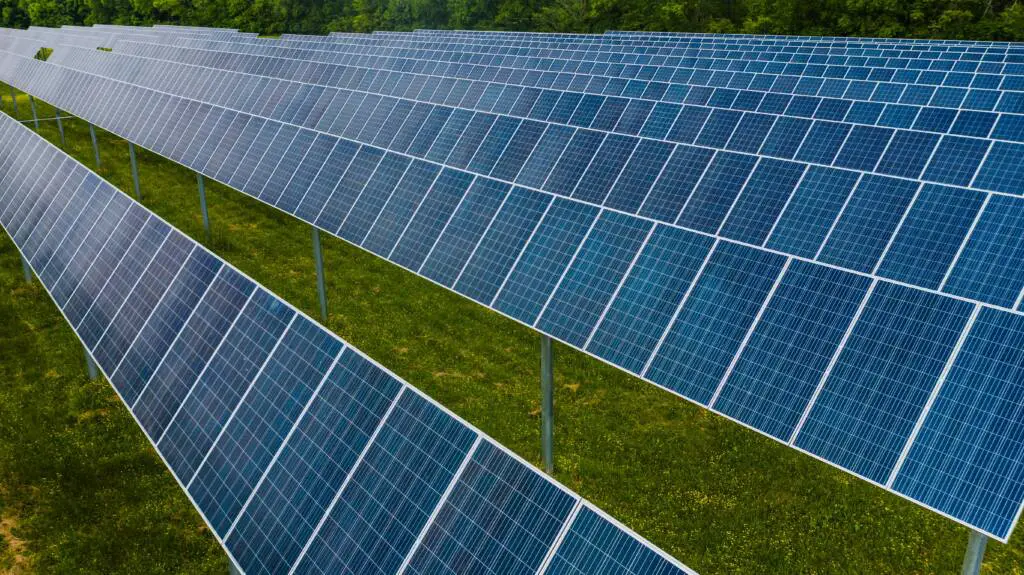Renewable Energy Integration

The integration of renewable energy sources into existing energy systems is becoming increasingly vital as the world transitions towards cleaner and more sustainable energy sources. However, this process comes with its own set of challenges, including technical, economic, and policy hurdles. To successfully integrate variable renewable energy sources like solar and wind power, it is crucial to understand and overcome these challenges.
This article aims to provide a comprehensive analysis of the complexities involved in renewable energy integration and offer practical solutions and strategies backed by evidence-based research. Industry professionals, policymakers, and anyone interested in the future of renewable energy integration will gain valuable insights from this article. Let’s delve into the intricacies of renewable energy integration and explore potential solutions for a greener and more efficient energy landscape.
Understanding Renewable Energy Integration
In today’s energy landscape, there is a growing focus on incorporating renewable energy sources to reduce reliance on fossil fuels and mitigate the effects of climate change. Renewable energy integration involves the process of integrating variable renewable energy sources like solar and wind power into existing energy systems. This involves connecting these sources to the power grid, managing their output, and ensuring their stability and reliability.
Integration is essential in transitioning towards cleaner energy, as it allows for a more diverse and sustainable power supply. By harnessing the power of renewable energy, we can reduce our carbon footprint and create a more sustainable future for generations to come. Through effective integration, we can maximize the benefits of renewable energy and pave the way towards a cleaner and greener energy future.
Technical Challenges in Integration
The integration of renewable energy sources, such as solar and wind power, into existing energy systems presents various technical challenges. These challenges include the intermittent nature of renewable energy, which can cause instability and reliability issues in the power grid. Additionally, the distance between renewable energy sources and consumption centers can also pose challenges in transmission and distribution.
To address these challenges, technological solutions such as smart grids and energy storage systems are being implemented. These solutions help to manage the variability of renewable energy and maintain grid stability. Furthermore, advanced techniques for forecasting and managing demand are also being utilized to improve the integration of renewable energy.
Despite these solutions, there is still a need for further innovation and research in the technical aspects of renewable energy integration. Collaborative efforts between power grid operators, renewable energy developers, and technology experts are crucial in overcoming these challenges and ensuring a successful transition towards a cleaner energy future.
Economic Challenges in Integration
The integration of renewable energy sources presents significant economic challenges. One of the main challenges is the cost-effectiveness and return on investment of renewable energy projects. The initial investment for renewable energy infrastructure can be high, leading to concerns about the financial feasibility of integration.
Additionally, the intermittent nature of renewable energy sources can create reliability issues for grid operators, which can result in additional costs. This highlights the importance of finding cost-effective storage solutions to mitigate the impacts of variable renewables on the grid.
Government policies and incentives play a crucial role in overcoming economic barriers to integration. These can include tax credits, feed-in tariffs, and net metering, which can make renewable energy more financially viable for both consumers and producers.
To successfully integrate renewable energy, a balance must be struck between economic considerations and the need for cleaner and more sustainable energy sources. This requires collaboration between stakeholders and continuous innovation in the industry. By addressing economic challenges, we can create a more financially feasible pathway towards a greener future.
Policy Challenges in Integration
Integrating renewable energy into existing energy systems is a technical and economic challenge. It also requires a supportive policy framework. Policies at local, national, and international levels are crucial. They facilitate renewable energy technology deployment and overcome integration barriers.
One of the main challenges in integration is the need to align policies across different levels and sectors. This requires coordination and collaboration between government agencies, energy regulators, and industry stakeholders. Policies must consider the unique characteristics of each renewable energy source. They should also account for the sources’ potential impact on the energy market.
Another key challenge is the stability and consistency of policies. Frequent policy changes can create uncertainty. They can hinder investment in renewable energy integration. This highlights the importance of long-term and stable policies. They provide a favorable environment for renewable energy development.
Countries like Germany have successfully implemented policy. Their energy transition policy has led to a significant increase in renewable energy sources. It has also caused a decrease in emissions. By studying and learning from such case studies, policymakers can overcome policy challenges. This will facilitate the effective integration of renewable energy sources.
Case Studies

Several successful case studies show how to integrate renewable energy. They provide valuable insights and lessons for industry professionals and policymakers. Europe’s success in integrating high levels of wind energy into their electricity systems is a notable example. Europe has achieved a high penetration of wind energy. This is due to advancements in technology and grid management strategies. Denmark and Germany lead the way.
Another case study from Indonesia shows that renewable energy can be integrated into developing countries. The government’s efforts in promoting solar energy and implementing innovative policies have led to a significant increase in solar installations. This has reduced their reliance on conventional generation sources.
Battery storage has also shown promising results. It overcomes the challenges of integrating intermittent renewables. In South Australia, the world’s largest battery storage system has significantly improved power quality issues. It has also increased grid stability.
These case studies highlight the importance of collaboration and innovation. They show how to successfully integrate renewable energy sources. We can overcome technical, economic, and policy hurdles by learning from these examples. It will help us move towards a more sustainable and cleaner energy future.
Solutions for Effective Integration
Integrating renewable energy sources poses challenges. However, practical solutions and strategies can achieve successful integration. Collaboration between stakeholders is crucial. It allows for a holistic approach and the sharing of resources and expertise. Continuous innovation is also key. It enables the development of new technologies and methods to improve integration processes.
To ensure effective integration, flexibility is essential. This includes having flexible power systems. It also means incorporating storage options such as batteries and electric vehicles. It also means implementing flexibility requirements in the energy market. Additionally, a thorough life cycle assessment should be conducted. It will assess the environmental impact and cost-effectiveness of integration strategies.
Interconnection and distributed generation can also play a significant role in successful integration. By connecting smaller renewable energy systems to the main grid, it reduces strain on the transmission network. This promotes a more diverse and resilient energy supply.
In conclusion, overcoming the challenges in integrating renewable energy sources requires a combination of technical, economic, and policy solutions. By implementing these solutions, we can move towards a greener and more sustainable energy future.
Conclusion
In conclusion, integrating renewable energy sources into existing energy systems is a complex and multifaceted process that requires careful consideration and strategic solutions. From technical challenges like grid stability to economic barriers such as cost-effectiveness, numerous hurdles must be overcome for successful integration.
However, through case studies and expert analysis, we have seen that these challenges can be addressed with the right strategies and policies in place. Collaboration between stakeholders, continuous innovation, and a supportive regulatory framework are key factors in achieving effective integration.
As the world continues to transition towards cleaner and more sustainable energy sources, it is crucial to understand and overcome these challenges to fully realize the potential of renewable energy. By implementing the solutions discussed in this article, we can pave the way for a greener and more resilient energy future.
https://7thavewellnessblog.com/?p=3739
https://www.un.org/en/
FAQ’s
What are the main challenges in integrating renewable energy into existing energy systems?
The main challenges in integrating renewable energy into existing energy systems include the intermittent nature of renewable sources, which leads to fluctuations in power generation, and the need for significant upgrades to the existing grid infrastructure to accommodate decentralized and variable energy inputs.
How do varying weather conditions affect the reliability of renewable energy sources?
Varying weather conditions impact the reliability of renewable energy sources by causing fluctuations in wind and solar power generation. Cloud cover, storms, and calm weather can lead to unpredictable drops in output, posing challenges for maintaining a stable and consistent energy supply.
What are the potential solutions for addressing the intermittency of renewable energy?
Potential solutions for addressing the intermittency of renewable energy involve advancements in energy storage technologies such as large-scale batteries and pumped hydro storage. These storage systems help store excess energy during peak generation periods and release it during low generation, ensuring a more reliable and consistent power supply.
How can we ensure a stable electricity grid while incorporating a high percentage of renewable energy?
Ensuring a stable electricity grid with a high percentage of renewable energy requires smart grid technologies, demand-side management, and a diversified mix of renewable sources. Grid flexibility, energy forecasting, and efficient load balancing are crucial elements in managing the variability inherent in renewable energy generation.
What role does energy storage play in the integration of renewable energy?
Energy storage plays a vital role in the integration of renewable energy by providing a means to store excess energy during times of high generation and releasing it when demand is high or generation is low. Battery storage, pumped hydro storage, and other innovative storage solutions contribute to grid stability and help overcome the intermittent nature of renewable sources.








